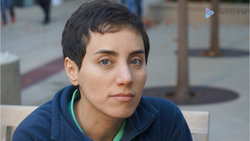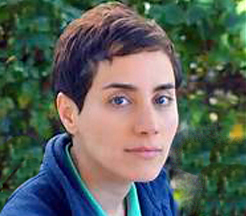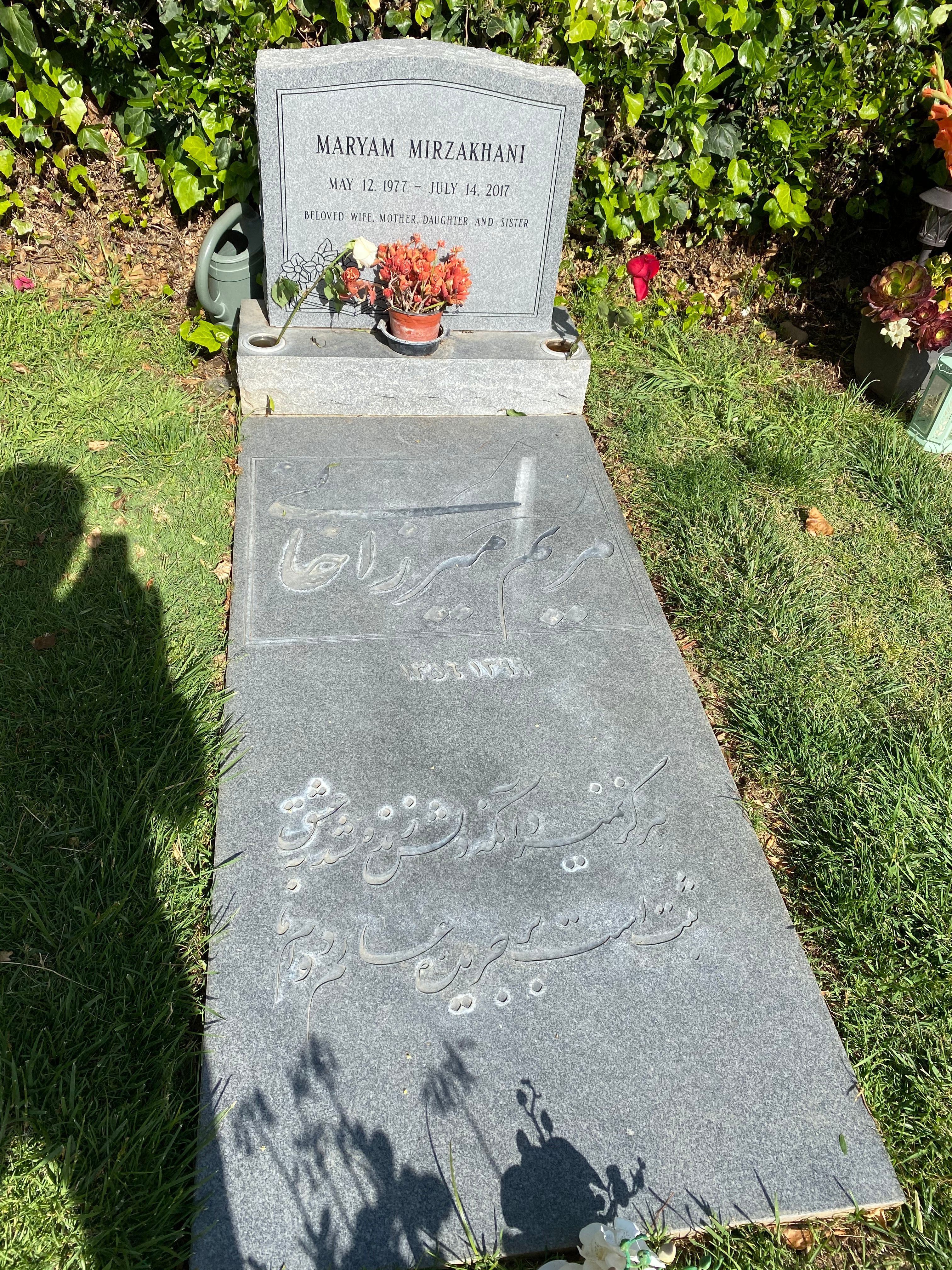Years later, the world-renowned mathematician, by then a Stanford professor, became the first and only woman to receive the prestigious Fields Medal, often described as the mathematician’s Nobel Prize.
Mirzakhani, who lost her long battle with breast cancer on Saturday at age 40, was described by her colleagues as a remarkable mathematician whose skill and passion was unmatched.
“Maryam is gone far too soon, but her impact will live on for the thousands of women she inspired to pursue math and science,” said Stanford President Marc Tessier-Lavigne. “Maryam was a brilliant mathematical theorist and also a humble person who accepted honors only with the hope that it might encourage others to follow her path.
“Her contributions as both a scholar and a role model are significant and enduring, and she will be dearly missed here at Stanford and around the world.”
The eight-decade-old Fields Medal is given every four years to no more than four mathematicians, all of whom are 40 or younger. Mirzakhani, a Palo Alto resident, received the award in 2014 in Seoul, South Korea.
“This is a great honor. I will be happy if it encourages young female scientists and mathematicians,” she said at the time. “I am sure there will be many more women winning this kind of award in coming years.”
Mirzakhani — known for willingly taking the difficult, complicated path to solve a mathematical problem — studied the symmetry of curved surfaces and other theoretical concepts known as “pure mathematics.” In 2008, she joined Stanford, where she taught mathematics until her death.
French mathematician Cédric Villani called Mirzakhani an “emblematic figure for Iran and for women in science.”
“Beautiful mind, beautiful soul, wonderful woman,” he said on Twitter Saturday.
Mirzakhani gained international recognition after winning a gold medal in Iran’s International Mathematical Olympiad in 1994. The following year she nailed a perfect score and two gold medals.
She went on to college at Sharif University in Tehran and then graduate school at Harvard University, where she was guided by Fields Medal winner Curtis McMullen, who once said she was filled with “fearless ambition.” At Harvard, she was known for her persistence and intense questioning, despite a language barrier.
“To see the kind of courage she demonstrated in saying, ‘This is cool stuff, I want to do it and I can do it,’ is just amazing to me,” said Dana Mackenzie, a mathematics and science writer who lives in Santa Cruz. “From the very beginning she’s been a star.”
Mirzakhani’s 2004 dissertation, in which she solved two longstanding problems and connected the two into a masterful thesis, catapulted her into even greater fame. It yielded papers in each of the top three mathematics journals.
“The majority of mathematicians will never produce something as good,” said Benson Farb, a mathematician at the University of Chicago. “And that’s what she did in her thesis.”
Most recently, Mirzakhani collaborated with Alex Askin at the University of Chicago on one of the field’s most perplexing problems: the trajectory of a billiards ball around a polygonal table. The resulting work was hailed as “the beginning of a new era” in mathematics.
“It’s a day of mourning for mathematics,” Mackenzie said. “She was one of the brightest mathematicians of her generation, and it’s always just a really sad thing when somebody like that leaves too early.”
Mirzakhani was a professor at Princeton University and a research fellow at the Clay Mathematics Institute before joining the Stanford faculty.
She leaves her husband, Jan Vondrák, and a daughter, Anahita.
Source: San Jose Mercury-News, July 15, 2017.
Years later, the world-renowned mathematician, by then a Stanford professor, became the first and only woman to receive the prestigious Fields Medal, often described as the mathematician’s Nobel Prize.
Mirzakhani, who lost her long battle with breast cancer on Saturday at age 40, was described by her colleagues as a remarkable mathematician whose skill and passion was unmatched.
“Maryam is gone far too soon, but her impact will live on for the thousands of women she inspired to pursue math and science,” said Stanford President Marc Tessier-Lavigne. “Maryam was a brilliant mathematical theorist and also a humble person who accepted honors only with the hope that it might encourage others to follow her path.
“Her contributions as both a scholar and a role model are significant and enduring, and she will be dearly missed here at Stanford and around the world.”
The eight-decade-old Fields Medal is given every four years to no more than four mathematicians, all of whom are 40 or younger. Mirzakhani, a Palo Alto resident, received the award in 2014 in Seoul, South Korea.
“This is a great honor. I will be happy if it encourages young female scientists and mathematicians,” she said at the time. “I am sure there will be many more women winning this kind of award in coming years.”
Mirzakhani — known for willingly taking the difficult, complicated path to solve a mathematical problem — studied the symmetry of curved surfaces and other theoretical concepts known as “pure mathematics.” In 2008, she joined Stanford, where she taught mathematics until her death.
French mathematician Cédric Villani called Mirzakhani an “emblematic figure for Iran and for women in science.”
“Beautiful mind, beautiful soul, wonderful woman,” he said on Twitter Saturday.
Mirzakhani gained international recognition after winning a gold medal in Iran’s International Mathematical Olympiad in 1994. The following year she nailed a perfect score and two gold medals.
She went on to college at Sharif University in Tehran and then graduate school at Harvard University, where she was guided by Fields Medal winner Curtis McMullen, who once said she was filled with “fearless ambition.” At Harvard, she was known for her persistence and intense questioning, despite a language barrier.
“To see the kind of courage she demonstrated in saying, ‘This is cool stuff, I want to do it and I can do it,’ is just amazing to me,” said Dana Mackenzie, a mathematics and science writer who lives in Santa Cruz. “From the very beginning she’s been a star.”
Mirzakhani’s 2004 dissertation, in which she solved two longstanding problems and connected the two into a masterful thesis, catapulted her into even greater fame. It yielded papers in each of the top three mathematics journals.
“The majority of mathematicians will never produce something as good,” said Benson Farb, a mathematician at the University of Chicago. “And that’s what she did in her thesis.”
Most recently, Mirzakhani collaborated with Alex Askin at the University of Chicago on one of the field’s most perplexing problems: the trajectory of a billiards ball around a polygonal table. The resulting work was hailed as “the beginning of a new era” in mathematics.
“It’s a day of mourning for mathematics,” Mackenzie said. “She was one of the brightest mathematicians of her generation, and it’s always just a really sad thing when somebody like that leaves too early.”
Mirzakhani was a professor at Princeton University and a research fellow at the Clay Mathematics Institute before joining the Stanford faculty.
She leaves her husband, Jan Vondrák, and a daughter, Anahita.
Source: San Jose Mercury-News, July 15, 2017.
Sponsored by Ancestry
Advertisement
Records on Ancestry
Advertisement







